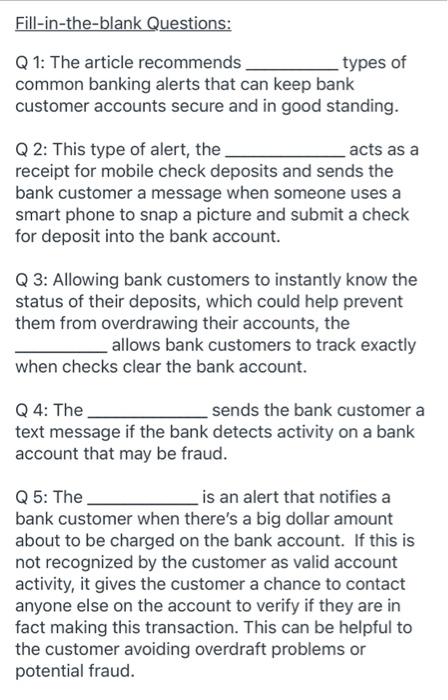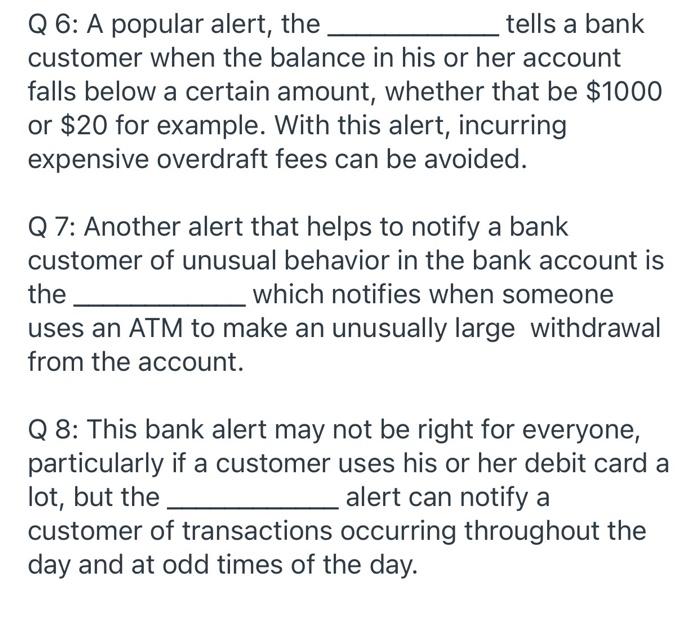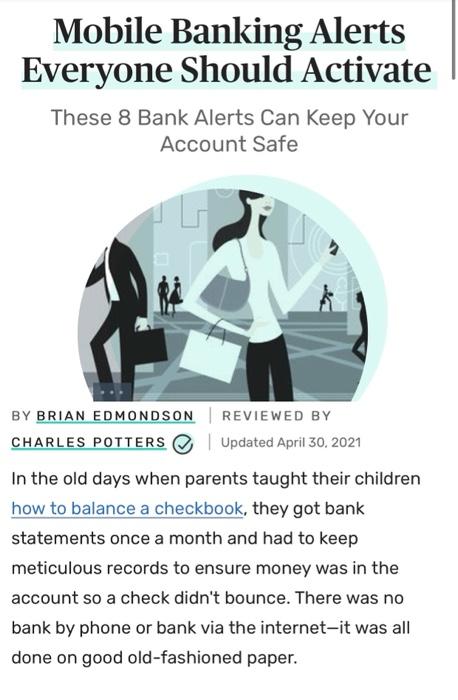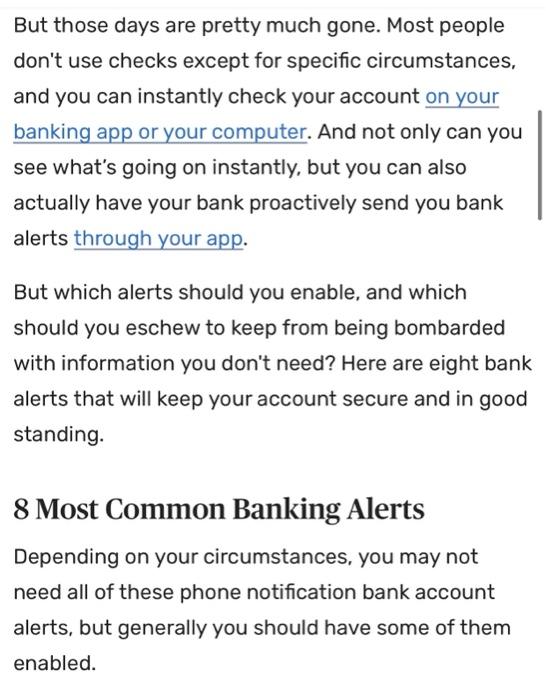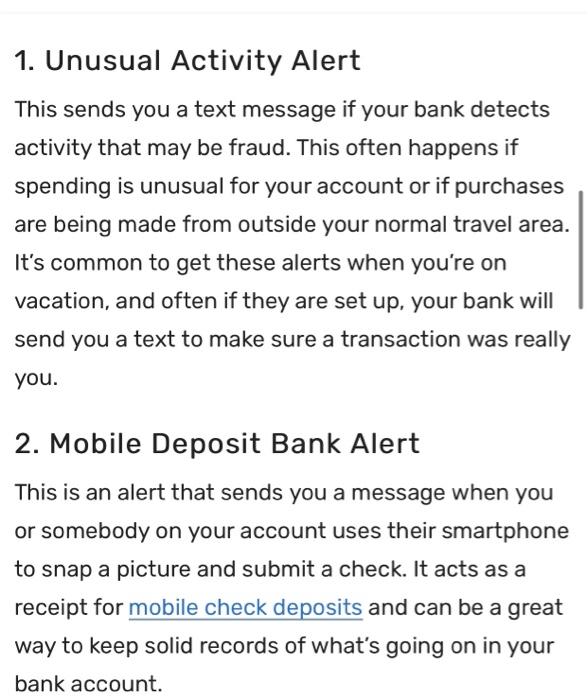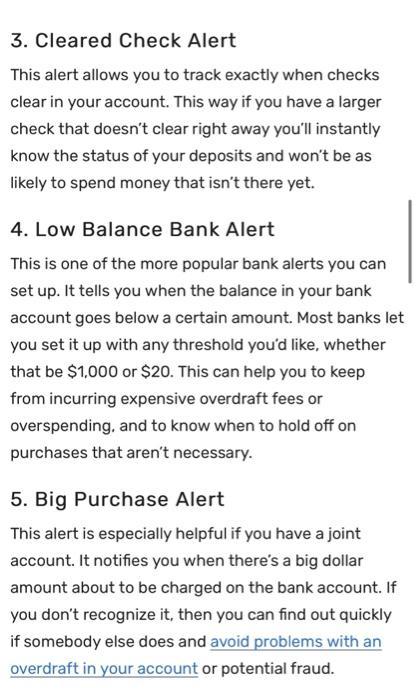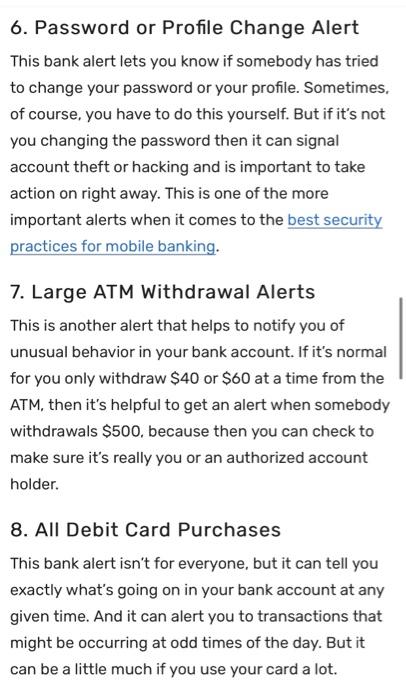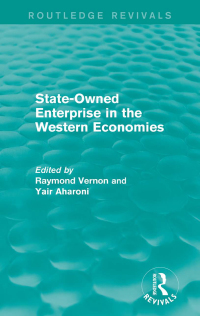fill in the blank using this article
Fill-in-the-blank Questions: Q1: The article recommends types of common banking alerts that can keep bank customer accounts secure and in good standing. Q2: This type of alert, the acts as a receipt for mobile check deposits and sends the bank customer a message when someone uses a smart phone to snap a picture and submit a check for deposit into the bank account. Q3: Allowing bank customers to instantly know the status of their deposits, which could help prevent them from overdrawing their accounts, the allows bank customers to track exactly when checks clear the bank account. Q 4: The sends the bank customer a text message if the bank detects activity on a bank account that may be fraud. Q5: The is an alert that notifies a bank customer when there's a big dollar amount about to be charged on the bank account. If this is not recognized by the customer as valid account activity, it gives the customer a chance to contact anyone else on the account to verify if they are in fact making this transaction. This can be helpful to the customer avoiding overdraft problems or potential fraud. Q6: A popular alert, the tells a bank customer when the balance in his or her account falls below a certain amount, whether that be $1000 or $20 for example. With this alert, incurring expensive overdraft fees can be avoided. Q 7: Another alert that helps to notify a bank customer of unusual behavior in the bank account is the which notifies when someone uses an ATM to make an unusually large withdrawal from the account. a Q 8: This bank alert may not be right for everyone, particularly if a customer uses his or her debit ca lot, but the alert can notify a customer of transactions occurring throughout the day and at odd times of the day. Mobile Banking Alerts Everyone Should Activate These 8 Bank Alerts Can Keep Your Account Safe BY BRIAN EDMONDSON REVIEWED BY CHARLES POTTERS Updated April 30, 2021 In the old days when parents taught their children how to balance a checkbook, they got bank statements once a month and had to keep meticulous records to ensure money was in the account so a check didn't bounce. There was no bank by phone or bank via the internet-it was all done on good old-fashioned paper. But those days are pretty much gone. Most people don't use checks except for specific circumstances, and you can instantly check your account on your banking app or your computer. And not only can you see what's going on instantly, but you can also actually have your bank proactively send you bank alerts through your app. But which alerts should you enable, and which should you eschew to keep from being bombarded with information you don't need? Here are eight bank alerts that will keep your account secure and in good standing. 8 Most Common Banking Alerts Depending on your circumstances, you may not need all of these phone notification bank account alerts, but generally you should have some of them enabled. 1. Unusual Activity Alert This sends you a text message if your bank detects activity that may be fraud. This often happens if spending is unusual for your account or if purchases are being made from outside your normal travel area. It's common to get these alerts when you're on vacation, and often if they are set up, your bank will send you a text to make sure a transaction was really you. 2. Mobile Deposit Bank Alert This is an alert that sends you a message when you or somebody on your account uses their smartphone to snap a picture and submit a check. It acts as a receipt for mobile check deposits and can be a great way to keep solid records of what's going on in your bank account. 3. Cleared Check Alert This alert allows you to track exactly when checks clear in your account. This way if you have a larger check that doesn't clear right away you'll instantly know the status of your deposits and won't be as likely to spend money that isn't there yet. 4. Low Balance Bank Alert This is one of the more popular bank alerts you can set up. It tells you when the balance in your bank account goes below a certain amount. Most banks let you set it up with any threshold you'd like, whether that be $1,000 or $20. This can help you to keep from incurring expensive overdraft fees or overspending, and to know when to hold off on purchases that aren't necessary. 5. Big Purchase Alert This alert is especially helpful if you have a joint account. It notifies you when there's a big dollar amount about to be charged on the bank account. If you don't recognize it, then you can find out quickly if somebody else does and avoid problems with an overdraft in your account or potential fraud. 6. Password or Profile Change Alert This bank alert lets you know if somebody has tried to change your password or your profile. Sometimes, of course, you have to do this yourself. But if it's not you changing the password then it can signal account theft or hacking and is important to take action on right away. This is one of the more important alerts when it comes to the best security practices for mobile banking. 7. Large ATM Withdrawal Alerts This is another alert that helps to notify you of unusual behavior in your bank account. If it's normal for you only withdraw $40 or $60 at a time from the ATM, then it's helpful to get an alert when somebody withdrawals $500, because then you can check to make sure it's really you or an authorized account holder. 8. All Debit Card Purchases This bank alert isn't for everyone, but it can tell you exactly what's going on in your bank account at any given time. And it can alert you to transactions that might be occurring at odd times of the day. But it can be a little much if you use your card a lot
